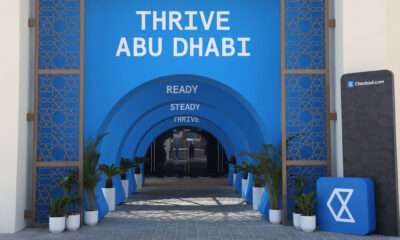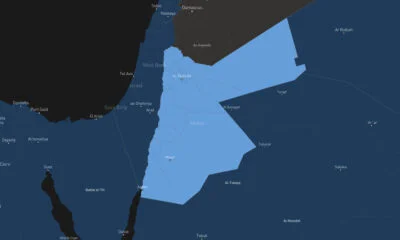News
Halo Space Capsule Set To Fly 32 Km Above Saudi Arabia
A June test flight will launch a second life-size prototype as the company reveals plans to begin commercial “Space Tourism” operations by 2026.

Spanish headquartered Halo Space, a “Stratospheric Commercial Flights Company” has announced plans to launch a sixth test flight from Saudi Arabian airspace in June this year. The news comes after the company received the go ahead from Saudi Arabia’s Communications, Space and Technology Commission (CST).
This test flight will launch Halo’s prototype capsule 32 kilometers above the Earth’s surface. The craft is followed by a helium balloon that slowly ascends and lands back on Earth during the 4-6 hour journey.
Halo plans to begin commercial tourist flights by 2026 at prices of $164,000 per ticket. The company has ambitious plans to help 10,000 people into space this decade, allowing them to view what is known as the Overview Effect — a blue halo that forms around the curvature of the Earth.
Space tourists will eventually be treated to unrivaled 360º vistas for around 1-2 hours at maximum altitude, with the capsule’s windows being significantly larger than those of a commercial airliner.
“I’ve spoken with several astronauts about the feeling of profound transformation when you view the Overview Effect. Everyone should get the chance to see our home from such a view,” says HALO Space CEO Carlos Mira.
Also Read: Pioneering 3D-Printed Mosque Unveiled In Jeddah
Halo is also working with space authorities from the US, Australia, Saudi Arabia, and Spain to establish further launch sites. The exact locations have been chosen based on meteorology, territory, and airspace safety.
“It is magnificent to see our vision of making space flight more accessible come to life,” added Carlos Mira. “To prove our concept and showcase all systems working together will signal to the world that near space tourism with Halo Space is ready for lift-off”.
News
Google Releases Veo 2 AI Video Tool To MENA Users
The state-of-the-art video generation model is now available in Gemini, offering realistic AI-generated videos with better physics, motion, and detail.

Starting today, users of Gemini Advanced in the MENA region — and globally — can tap into Veo 2, Google’s next-generation video model.
Originally unveiled in 2024, Veo 2 has now been fully integrated into Gemini, supporting multiple languages including Arabic and English. The rollout now brings Google’s most advanced video AI directly into the hands of everyday users.
Veo 2 builds on the foundations of its predecessor with a more sophisticated understanding of the physical world. It’s designed to produce high-fidelity video content with cinematic detail, realistic motion, and greater visual consistency across a wide range of subjects and styles. Whether recreating natural landscapes, human interactions, or stylized environments, the model is capable of interpreting and translating written prompts into eight-second 720p videos that feel almost handcrafted.
Users can generate content directly through the Gemini platform — either via the web or mobile apps. The experience is pretty straightforward: users enter a text-based prompt, and Veo 2 returns a video in 16:9 landscape format, delivered as an MP4 file. These aren’t just generic clips — they can reflect creative, abstract, or highly specific scenarios, making the tool especially useful for content creators, marketers, or anyone experimenting with visual storytelling.
Also Read: Getting Started With Google Gemini: A Beginner’s Guide
To ensure transparency, each video is embedded with SynthID — a digital watermark developed by Google’s DeepMind. The watermark is invisible to the human eye but persists across editing, compression, and sharing. It identifies the video as AI-generated, addressing concerns around misinformation and media authenticity.
While Veo 2 is still in its early phases of public rollout, the technology is part of a broader push by Google to democratize advanced AI tools. With text-to-image, code generation, and now video creation integrated into Gemini, Google is positioning the platform as a full-spectrum creative assistant.
Access to Veo 2 starts today and will continue expanding in the coming weeks. Interested users can try it out at gemini.google.com or through the Gemini app on Android and iOS.
























